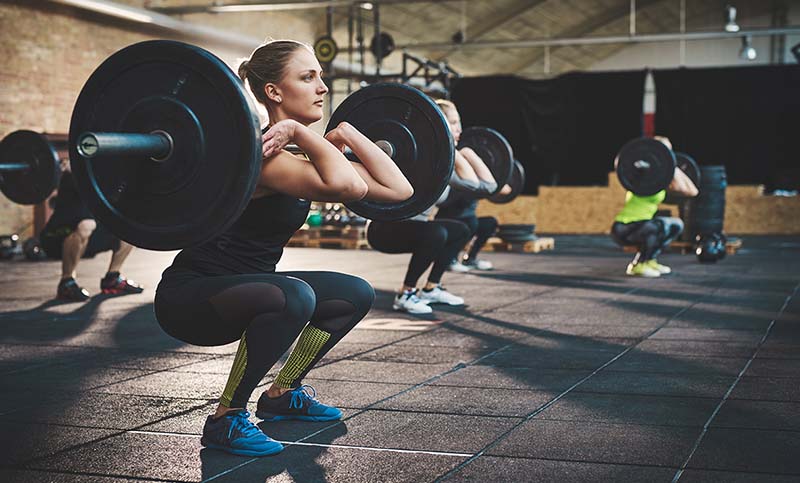Simple Tips for Knowing How Much Weight to Lift

Simple Tips for Knowing How Much Weight to Lift
New clients often ask personal trainers what weight they should start lifting. It's a fair question given that most people, particularly men, will lift far more than they should. Not only does this interfere with your ability to maintain proper form, it can significantly increase your risk of injury.
Simple Tips for Knowing How Much Weight to Lift
New clients often ask personal trainers what weight they should start lifting. It's a fair question given that most people, particularly men, will lift far more than they should. Not only does this interfere with your ability to maintain proper form, it can significantly increase your risk of injury.
There is a strategy that can help pinpoint your ideal weight and know when it's time to lift heavier weights. It all starts with three simple things:
- Learning proper form
- Listening to your body
- Keeping to an allotted time, neither rushing between exercises nor resting too long
Tips for Ensuring Proper Form
One of the things people fail to realize when lifting weights is now much their bodies will move when doing so. Unfortunately, this can undermine the very goal of an exercise.
When lifting a weight, what you always need to do is to focus on isolating a muscle during the movement. If you swing your body, you are using momentum to lift the weight. By doing so, you are dispersing the energy meant for one muscle to many muscles.
This why people who grunt, arch their backs, or drop their weights are doing themselves a disservice (and likely annoying others in the process). By simply by lowering their weight to a reasonable level, they can achieve so much more with so much less.
Here's a trick that can help: Instead of lifting a weight standing unsupported, try pressing your back against a wall or post while doing an exercise. Try it with a bicep curl to see what we mean. You'll be surprised how much more difficult it is to lift a weight when your back and core muscles are not allowed to assist.
Now, maintain the same focus when doing other weightlifting exercises, keeping your back flat, shoulders square, hips level, abdomen taut, and head and neck relaxed but lifted. Not only will this help you maintain proper form, it can help direct which weight is appropriate for the exercise you are doing.
Tips for Selecting the Right Weight
Let's assume that you are doing a 10-exercise workout program involving three sets of 10 repetitions for each exercise. That's a pretty good starting point for a general fitness plan.
To determine the ideal weight for a specific exercise:
- Choose a weight that allows you to do the first 10 reps with moderate difficulty. What we mean is that by the end of the tenth rep, you should find it somewhat difficult to lift but not so difficult as to strain, hold your breath, or shake excessively. If you do, drop down a little.
- Rest for no more than 60 seconds and no less than 30 seconds between sets.
- By the tenth lift of the third set, you should be struggling to complete the lift but able to do so without grunting or breaking form. Ths is the exact intensity you will want to sustain whether you are new to weight training or a seasoned veteran.
- If you find you can do the last lift with little effort, then it's time to increase the weight. Progressive overload (adding more weight over time) is a fundamental principle of weight training. If you don't continually challenge your body by increasing your weights, you will eventually plateau even if you increase the number of exercises you do.
- On the other hand, if your current weight is not challenging enough but the next one up is too heavy, you can do one of two things: either use the heavier weight and drop down to eight or nine reps or stay with the current weight and increase to 12 or 15 reps. Either way, it's all about reaching that fatigued state, no matter how you get there.
If in doubt, work with a personal trainer for a few weeks to learn proper form and technique. Despite what some may tell you, exercise is not always intuitive. Learning good habits at the start is always better than correcting mistakes later.